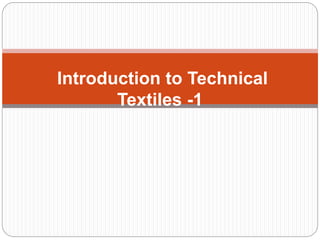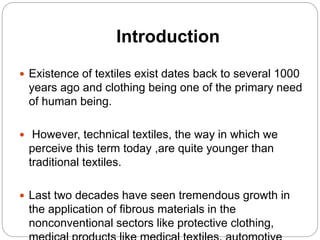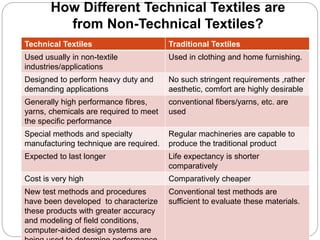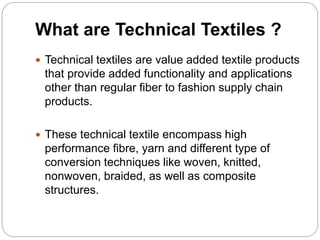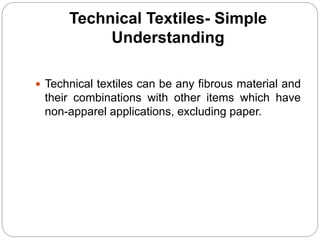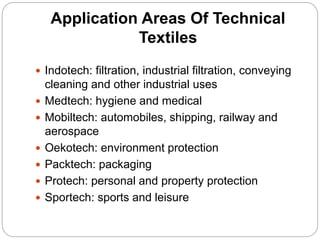The document provides an introduction to technical textiles, including:
- Technical textiles are newer than traditional textiles and have seen growth in non-conventional applications like protective clothing over the last two decades.
- Technical textiles are designed to perform heavy duty functions and have stringent performance requirements compared to traditional textiles which focus more on aesthetics and comfort.
- Technical textiles encompass high performance fibers, yarns, and conversion techniques like weaving, knitting, and nonwovens to meet specific performance needs.
